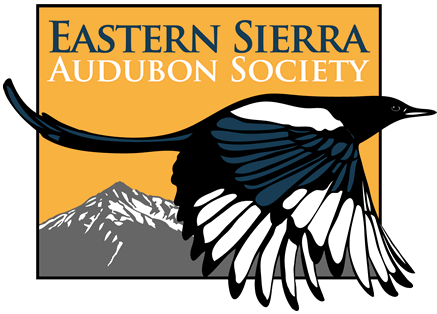Just after the beginning of the last century, water was taken from the Owens River south of Tinemaha Reservoir and channeled into the aqueduct for transport to Los Angeles. For all practical purposes this destroyed the thriving riparian habitat that had existed for ages from there to the Owens River delta over 60 miles to the south. In todays enlightened consciousness, this magnitude of destruction would be unthinkable. The courts have begun rectification of the damage and have ordered the City of Los Angeles, Department of Water and Power (LADWP) to rewater this section of the dried riverbed to mitigate, in part, for the damage they have caused the Owens Valley over the last few decades. The result is the Lower Owens River Project or LORP.
What this means to the birds that live all or part of their lives here will depend on how successful LADWP is in achieving the goals of the LORP. Over the last century riparian habitat in the western United States has dramatically declined and only 10% of that which existed in California a century ago remains. This is a major reason why many riparian obligate species are endangered, threatened, or species of special concern.
The reintroduction of a healthy, robust riparian corridor of willows and cottonwoods would encourage the repopulation of species such as Southwest Willow Flycatcher, Least Bells Vireo, and Western Yellow-billed Cuckoo. All are State Endangered and the flycatcher and vireo are also Federally Endangered. Among other riparian dependent species that would profit from this enhanced habitat would be Yellow-breasted Chat, Yellow Warbler, Blue Grosbeak as well as others. These three species are found in low numbers and are very sparsely distributed along the Owens River north of the aqueduct intake where water flows.
After a ten-day search along the river by Whitehorse Associates, no new willow growth was found! Two major contributing factors are water levels and cattle grazing. LADWP stated in their Draft EIR that it will control both problems by increasing water releases which will overflow banks when willow seeds are falling to aid in distribution and germination and by fencing cows out to protect tender, new willow growth from being browsed. Other serious questions are the increase in tules and Brown-headed Cowbirds that the LORP must face. Larger tracts of tules will please Marsh Wrens, Red-winged Blackbirds, and Common Yellowthroats but not many other species. Increased populations of breeding species will please the cowbirds that will have more nests to parasitize by laying their eggs for other species to feed and fledge.
Restoring the Owens River to its former splendor will not only be a boon to those species that breed or winter here but to the myriads of migrants who travel up the Owens Valley each spring and reverse their routes in fall. Ensuring a healthy riparian habitat will ensure the continued economic growth of the County. Build it and they (birds and people) will come!
For more information on the LORP visit ovcweb.org
Tags: blackbird, flycatcher, grosbeak, vireo, warbler, wren
